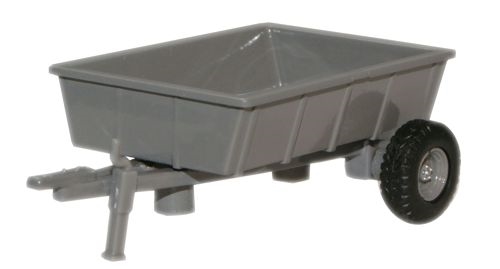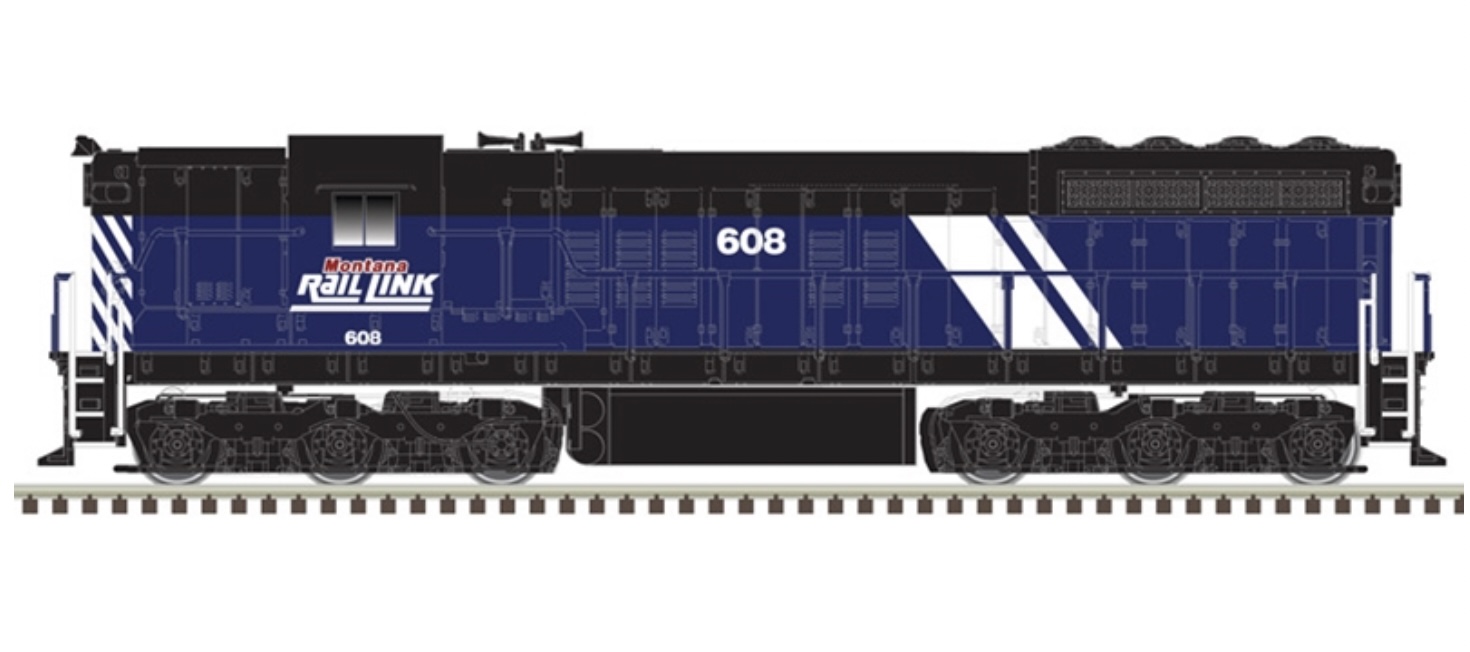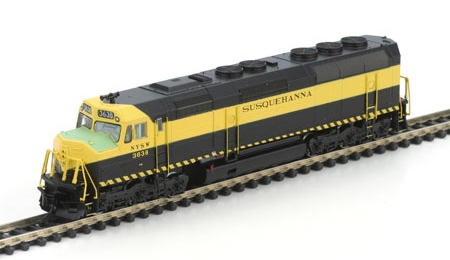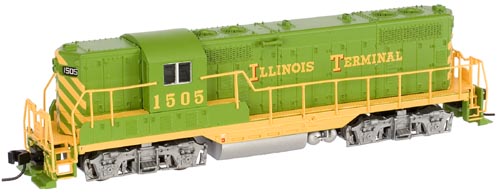Specific Item Information: Guilford.
Model Information: The model was introduced in 1990 and the early releases were made by Kato Japan for Atlas. From 2004 on, the models were made in China and the internals were modified to a more modern mechanism. The Atlas SD7, SD9, SD24 and SD26 all share the same internal mechanism and differ only in their shell details. The modern releases fall under the "Classic" label for the SD7 and SD9 models and "Master" label for the SD24 and SD 26.
The early releases featured the Kato-designed "low friction drive" which had been successfully introduced in their Kato-branded U30C model). This design allowed clean transfer of current from wheels to long copper strips to the chassis and then to the lightboard. This may not sound innovative, as many modern mechanisms use this design today, but in 1990 it was a game-changer. The post-2004 releases are fairly standard "modern" mechanisms featuring a split-frame, dual-flywheels, and magnetic operating knuckle couplers. They run quiet and smooth and can pull 30 or more standard-weight cars.
The early releases featured the Kato-designed "low friction drive" which had been successfully introduced in their Kato-branded U30C model). This design allowed clean transfer of current from wheels to long copper strips to the chassis and then to the lightboard. This may not sound innovative, as many modern mechanisms use this design today, but in 1990 it was a game-changer. The post-2004 releases are fairly standard "modern" mechanisms featuring a split-frame, dual-flywheels, and magnetic operating knuckle couplers. They run quiet and smooth and can pull 30 or more standard-weight cars.
DCC Information: Models produced from 2006 are DCC Ready or Dual-Model Decoder Equipped. They accept the following drop-in decoders:
- Digitrax DN163A0: 1 Amp N Scale Mobile Decoder for Atlas N-Scale GP40-2, U25B, SD35, Trainmaster, B23-7 and others
- TCS AMD4 (Installation for Atlas SD-9)
- NCE N12A0: Plug and play decoder for N-Scale Atlas GP40-2, U25B, U23B, B23-7, 30-7, 36-7, GP38, SD25, TRAINMASTER, etc.
- MRC 1812: N-Scale Sound Decoder for most Atlas short/medium locos (selection of 4 prime movers - might not be prototypical for this model however)
Earlier DCC factory-equipped versions were fitted with Lenz LE063XF decoders, whereas most recent versions are fitted with NCE N12A0 decoders. The Atlas version of these decoders will respond to manufacturer's address "127" (CV8) i.e. "Atlas Model Railroad Products", though being identical to their original manufacturer's specification.
- Digitrax DN163A0: 1 Amp N Scale Mobile Decoder for Atlas N-Scale GP40-2, U25B, SD35, Trainmaster, B23-7 and others
- TCS AMD4 (Installation for Atlas SD-9)
- NCE N12A0: Plug and play decoder for N-Scale Atlas GP40-2, U25B, U23B, B23-7, 30-7, 36-7, GP38, SD25, TRAINMASTER, etc.
- MRC 1812: N-Scale Sound Decoder for most Atlas short/medium locos (selection of 4 prime movers - might not be prototypical for this model however)
Earlier DCC factory-equipped versions were fitted with Lenz LE063XF decoders, whereas most recent versions are fitted with NCE N12A0 decoders. The Atlas version of these decoders will respond to manufacturer's address "127" (CV8) i.e. "Atlas Model Railroad Products", though being identical to their original manufacturer's specification.
Road Name History: 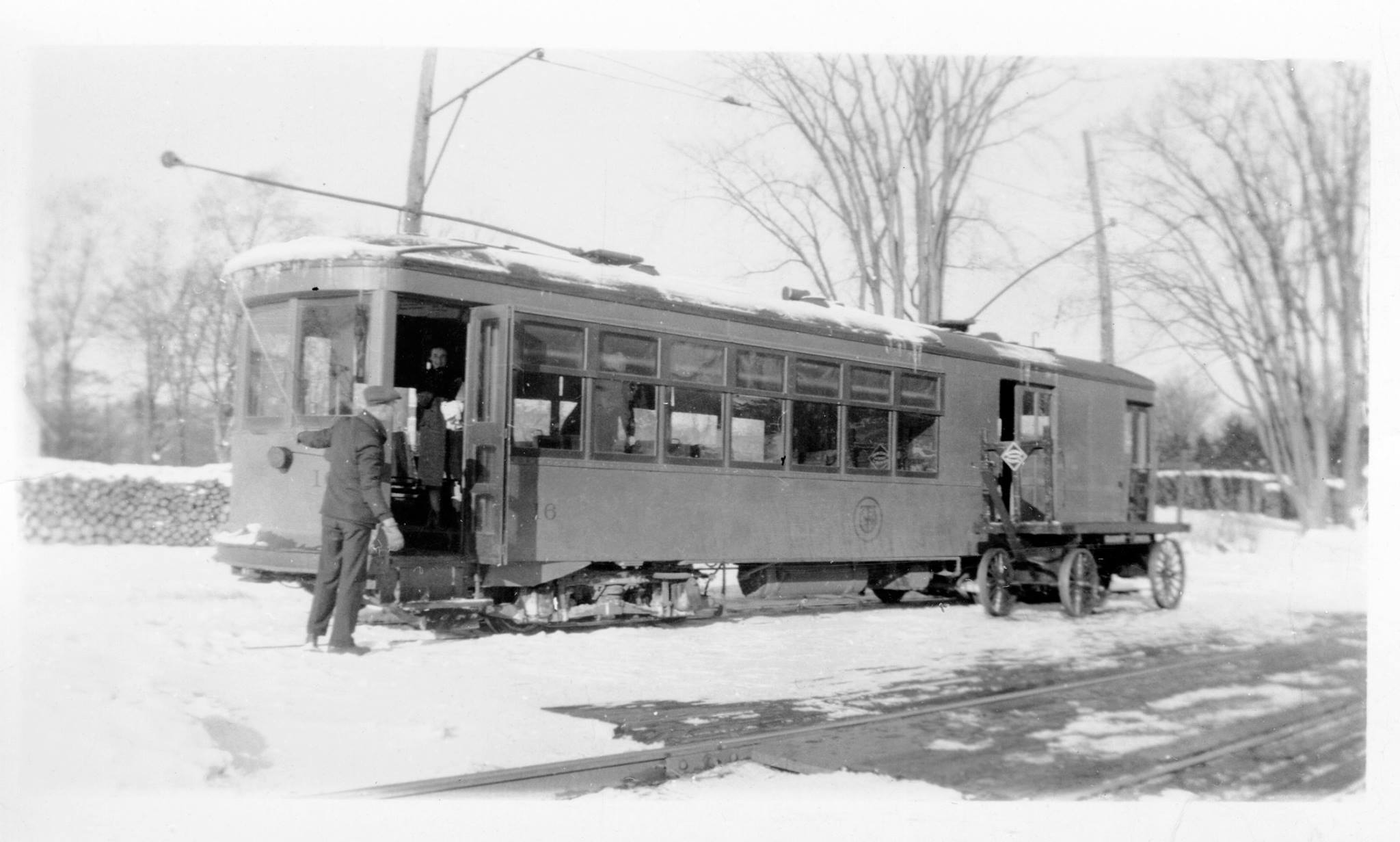 The ST began in 1923 from the reorganization of the Springfield Electric Railway, a sleepy interurban line from Charlestown, New Hampshire across the Connecticut River to Springfield, Vermont, a total distance of just 5 and a half miles. The line had been under control of their only connection, Boston & Maine for most of its existence. Passenger service ended in 1947 but freight service soldiered on under the trolley wire until 1956 when the line was dieselized with a single used GE 44-tonner.
The ST began in 1923 from the reorganization of the Springfield Electric Railway, a sleepy interurban line from Charlestown, New Hampshire across the Connecticut River to Springfield, Vermont, a total distance of just 5 and a half miles. The line had been under control of their only connection, Boston & Maine for most of its existence. Passenger service ended in 1947 but freight service soldiered on under the trolley wire until 1956 when the line was dieselized with a single used GE 44-tonner.
In the 1980’s, everything changed for the tiny ST. The United Transportation Union had made a deal with the ST to be the sole representative of ST employees in exchange for more flexible work rules. This saved the original 5 mile line from certain abandonment. Then a few other lines operated by Maine Central and Boston & Maine that were slated for abandonment were instead transferred to the ST whose flexible work rules saved service to these routes as well. Trains were run with a single GP7 and a small fleet of Trackmobiles.
By this period, Springfield Terminal, Maine Central, Boston & Maine, and Delaware & Hudson were owned by Timothy Mellon’s Guilford Transportation. Mellon came from money (his family founded the Mellon Bank and was instrumental in putting together Alcoa and Gulf Oil) and seemed to operate under the belief that anything worth doing was worth over-doing. In 1985, the struggling Maine Central laid off 30 shop workers with no severance package. There was a strike and MEC and Guilford management were pressed into train service. Accidents soared and the strike spread to other lines (legal under the Railway Labor Act.) Congress stopped the strike and forced MEC to give in to labor demands. Mellon was furious and retaliated by leasing the Maine Central and Boston & Maine to the tiny Springfield Terminal. This put everyone under ST’s flexible work rules. Guilford management bragged that it now took just 8 crew members to get a freight train from Portland, Maine to Buffalo, New York, a job that used to take 38 crew members! A court injunction stopped Guilford’s lease of the D&H so Guilford dropped the D&H into bankruptcy instead. They assumed they could get it back when the bankruptcy was resolved but Delaware Otsego (an area shortline group) and Canadian Pacific bid against Guilford and CPR won, stripping the D&H from Guilford. The Springfield Terminal continued to run the MEC and B&M.
Mellon’s harsh treatment of the local unions is a bit ironic even though he’s the grandson of some of the original robber barons. During his years at Yale, Timothy Mellon was a flag burning leftist who famously gave money to the North Vietnamese! His second business was half ownership of a tie treatment plant where he could be found in a T-Shirt and jeans dragging pallets of lumber around and loading trucks. He even drove an old VW Beetle to work. By the late 80’s, he was one of the most hated men in New England.
In 1998, Guilford bought the Pan Am name and Pan Am Railways subsequently became the official trade name for the railroad. The Springfield Terminal became a paper railroad in most respects although it is officially still the lessor of the Maine Central and Boston & Maine.

In the 1980’s, everything changed for the tiny ST. The United Transportation Union had made a deal with the ST to be the sole representative of ST employees in exchange for more flexible work rules. This saved the original 5 mile line from certain abandonment. Then a few other lines operated by Maine Central and Boston & Maine that were slated for abandonment were instead transferred to the ST whose flexible work rules saved service to these routes as well. Trains were run with a single GP7 and a small fleet of Trackmobiles.
By this period, Springfield Terminal, Maine Central, Boston & Maine, and Delaware & Hudson were owned by Timothy Mellon’s Guilford Transportation. Mellon came from money (his family founded the Mellon Bank and was instrumental in putting together Alcoa and Gulf Oil) and seemed to operate under the belief that anything worth doing was worth over-doing. In 1985, the struggling Maine Central laid off 30 shop workers with no severance package. There was a strike and MEC and Guilford management were pressed into train service. Accidents soared and the strike spread to other lines (legal under the Railway Labor Act.) Congress stopped the strike and forced MEC to give in to labor demands. Mellon was furious and retaliated by leasing the Maine Central and Boston & Maine to the tiny Springfield Terminal. This put everyone under ST’s flexible work rules. Guilford management bragged that it now took just 8 crew members to get a freight train from Portland, Maine to Buffalo, New York, a job that used to take 38 crew members! A court injunction stopped Guilford’s lease of the D&H so Guilford dropped the D&H into bankruptcy instead. They assumed they could get it back when the bankruptcy was resolved but Delaware Otsego (an area shortline group) and Canadian Pacific bid against Guilford and CPR won, stripping the D&H from Guilford. The Springfield Terminal continued to run the MEC and B&M.
Mellon’s harsh treatment of the local unions is a bit ironic even though he’s the grandson of some of the original robber barons. During his years at Yale, Timothy Mellon was a flag burning leftist who famously gave money to the North Vietnamese! His second business was half ownership of a tie treatment plant where he could be found in a T-Shirt and jeans dragging pallets of lumber around and loading trucks. He even drove an old VW Beetle to work. By the late 80’s, he was one of the most hated men in New England.
In 1998, Guilford bought the Pan Am name and Pan Am Railways subsequently became the official trade name for the railroad. The Springfield Terminal became a paper railroad in most respects although it is officially still the lessor of the Maine Central and Boston & Maine.
Brand/Importer Information: In 1924 Stephan Schaffan, Sr. founded the Atlas Tool Company in Newark, New Jersey. In 1933 his son, Stephan Schaffan, Jr., came to work for his father at the age of sixteen. Steve Jr. built model airplanes as a hobby and frequented a local hobby shop. Being an enterprising young man, he would often ask the owner if there was anything he could do to earn some extra spending money. Tired of listening to his requests, the hobby-store owner threw some model railroad track parts his way and said, "Here, see if you can improve on this".
In those days, railroad modelers had to assemble and build everything from scratch. Steve Jr. created a "switch kit" which sold so well, that the entire family worked on them in the basement at night, while doing business as usual in the machine shop during the day.
Subsequently, Steve Jr. engineered the stapling of rail to fiber track, along with inventing the first practical rail joiner and pre-assembled turnouts and flexible track. All of these products, and more, helped to popularize model railroading and assisted in the creation of a mass-market hobby. The budding entrepreneur quickly outgrew the limitations of a basement and small garage operation. Realizing they could actually make a living selling track and related products, Steve and his father had the first factory built in Hillside, New Jersey at 413 Florence Avenue in 1947. On September 30, 1949, the Atlas Tool Company was officially incorporated as a New Jersey company.
In 1985, Steve was honored posthumously for his inventions by the Model Railroad Industry Association and was inducted into the Model Railroad Industry Hall of Fame in Baltimore, Maryland. In addition, Steve was nominated and entered into the National Model Railroad Association Pioneers of Model Railroading in 1995.
In the early 1990s, the Atlas Tool Company changed its name to Atlas Model Railroad Company, Inc.
In those days, railroad modelers had to assemble and build everything from scratch. Steve Jr. created a "switch kit" which sold so well, that the entire family worked on them in the basement at night, while doing business as usual in the machine shop during the day.
Subsequently, Steve Jr. engineered the stapling of rail to fiber track, along with inventing the first practical rail joiner and pre-assembled turnouts and flexible track. All of these products, and more, helped to popularize model railroading and assisted in the creation of a mass-market hobby. The budding entrepreneur quickly outgrew the limitations of a basement and small garage operation. Realizing they could actually make a living selling track and related products, Steve and his father had the first factory built in Hillside, New Jersey at 413 Florence Avenue in 1947. On September 30, 1949, the Atlas Tool Company was officially incorporated as a New Jersey company.
In 1985, Steve was honored posthumously for his inventions by the Model Railroad Industry Association and was inducted into the Model Railroad Industry Hall of Fame in Baltimore, Maryland. In addition, Steve was nominated and entered into the National Model Railroad Association Pioneers of Model Railroading in 1995.
In the early 1990s, the Atlas Tool Company changed its name to Atlas Model Railroad Company, Inc.
Item created by: gdm on 2017-09-28 07:26:01
If you see errors or missing data in this entry, please feel free to log in and edit it. Anyone with a Gmail account can log in instantly.
If you see errors or missing data in this entry, please feel free to log in and edit it. Anyone with a Gmail account can log in instantly.





